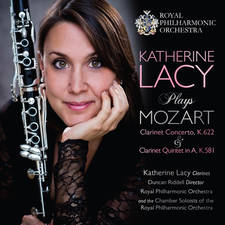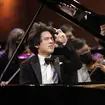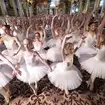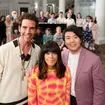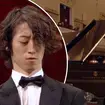The Full Works Concert - Friday 6 September 2013
Mussorgsky's Pictures at an Exhibition and Tchaikovsky's Romeo and Juliet provide a rich, Russian flavour to tonight's concert.
Tonight's concert opens with Camille Saint-Saens' Danse Macabre. In 1873 the composer wrote a song version but, as most singers were finding it too difficult, decided to rework the material for orchestra. The result caused widespread consternation: not merely the deformed version of the ‘Dies irae’ plainsong but the horrible screeching from solo violin, and a xylophone. Not to mention the hypnotic repetitions.
The sixteen oboe concertos of Tomaso Albinoni, eight for one oboe and eight for two oboes, were the earliest such works by an Italian composer to be published. They are also, perhaps, the most unusual and individual instrumental works Albinoni ever wrote. In his concertos the oboes function, in their relationship to the strings, almost like singers.
Tchaikovsky was virtually nagged into writing his Romeo and Juliet by the composer Balakirev, who then disliked Tchakovsky's original version so much that it was re-written twice. It is the third and final version that is most commonly played today. Regardless of the work's painful genesis, Romeo and Juliet is a musical masterpiece which is likely to remain unsurpassed as an expression of young and tragic love.
Howard Shelley's performance of Hummel's Piano Concerto No.1 in C major is exceptionally vivid and lively. The concerto was Hummel's first mature work and has many striking parallels with a much more famous concerto, Beethoven’s ‘Emperor’. Both were written in 1809, which saw the occupation of Vienna by Napoleon’s troops, and, interestingly, both were dedicated to Beethoven’s patron, the Archduke Rudolph of Austria, Hummel’s receiving its first performance during the celebrations for the Archduke’s marriage.
Modest Mussorgsky's Pictures at an Exhibition was written in honour of the composer's friend - a painter called Vladimir Hartmann who died at the peak of his career, aged just 39. The loss of not just a close friend but an artistic inspiration had a deep effect on Mussorgsky - pictured above. By way of a tribute, he decided to compose his set of piano pieces Pictures at an Exhibition. Nowadays, however, Pictures at an Exhibition is most often heard not in its original piano version but in orchestrated form. Many musicians, from Henry Wood to Leopold Stokowski, have arranged the work for full orchestra, but it’s far and away the 1922 version by Maurice Ravel that receives the most regular performance and praise today. It's the version we will hear tonight.
Camille Saint-Saens: Danse Macabre
Michel Plasson conducts the Toulouse Capitole Orchestra
Tomaso Albinoni: Concerto in D major for 2 Oboes
Oboes: Pierre Pierlot, Jacques Chambon
Claudio Scimone conducts I Solisti Veneti
Peter Ilich Tchaikovsky: Romeo and Juliet
Yuri Termikanov conducts the Royal Philharmonic Orchestra
Johann Nepomuk Hummel: Piano Concerto No.1 in C major
Piano: Howard Shelley
London Mozart Players
Modest Mussorgsky: Pictures at an Exhibition
Charles Dutoit conducts the Montreal Symphony Orchestra
